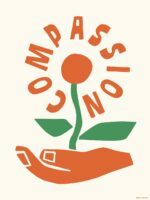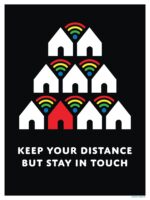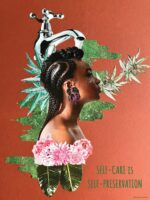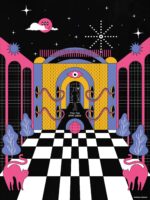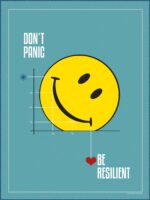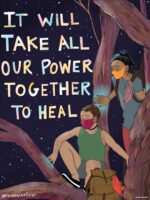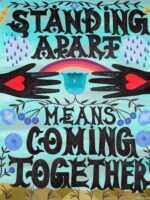
Welldoing ToolWelldoing Tool
Mapping Belonging
Contributed by en.v (Kuwait)
“Mapping Belonging” is a social cartography exercise that consists of identifying the different emotions that we associate with the different places where our lives (and the lives of other members of our society) take place. It encourages us to explore, from a place of curiosity, our conceptions of identity, belonging, difference and otherness, and gain deeper insights about our individual and collective lived experiences.
It is a tool that serves as a participatory and experimental research method, while also creating a positive impact on the participants in the process of being implemented: it increases our ability to understand social diversity and empathize with other perspectives and values.
Collective emotional mapping takes us out of the bubble of our individual worldview and shows us that we are part of a larger system where many different people find many different sources of meaning. A higher sense of self-awareness and social awareness are both key ingredients to the process of strengthening community bonds from a place of compassion and resilience, and they establish the grounds for positive interpersonal interaction and transformative change.
en.v has been working with its AWAKEN Community of Practice to further refine and test out this tool, and facilitate it across diverse communities in Kuwait, collecting valuable data and promoting self-reflection and connection.
How to Practice
What you will need: a map of your location, coloured stickers corresponding to the emotions chart, cards, and writing materials
Step 1
Welcome participants into the space and tell them a little bit about the exercise. Facilitators can add whatever they consider suitable to this explanation and refer to examples from their personal experiences.
Step 2
Introduce a warm-up / ice-breaker. Before the mapping activity, invite the group to do a short exercise to warm-up and break the ice for about 10 minutes. The activity is called “story-slam”: participants will be asked to get into two lines facing each other and give a 1-minute answer to the person in front of them (at each turn) to the questions that the facilitators will ask out loud. After one minute, one of the lines will move one spot and each participant will be facing someone new and giving an answer to a new question. Facilitators can choose any of the following questions during five rounds:
What is your favourite place in [location]?
Where do you live and have you ever lived in that area?
What place in [location] brings up happy memories and why?
Where do you go when you want to relax?
Where in [location] do you eat the best food?
What are your favourite family spaces?
What is a space that doesn’t feel like [location]?
Are there places in [location]that you avoid? Which ones and why?
What are the places you frequented as a child?
If you have a friend coming to visit [location] for the first time, where would you take them and why?
Step 3
Begin the Mapping Belonging exercise. Start by explaining the activity: it’s an exercise that consists of identifying the different emotions that we associate with the different places where our lives take place. Facilitators will ask the participants to look at the map of their location, with its different zones and areas, and identify the places where they feel these emotions:

While looking at the map and identifying the areas where they feel the different emotions (they can choose 3-4 places for each emotion), participants can take coloured stickers that correspond to the emotions and place them on the chosen areas of the map. This part of the activity can last 10-15 minutes.
Step 4
Go deeper with story cards. After they have finished placing the stickers in the corresponding areas, facilitators will give them a set of cards that contain some questions about the mapped emotions and ask them to write their answers on the cards. Encourage participants to keep their answers short and sweet and use only the space on the cards. This part of the activity can last 20-25 minutes.
Step 5
Conclude with a group discussion. After participants are done filling in the cards, host a short collective debrief (5 minutes) around the two following questions:
What did it feel like to place the emotions on the map? Are there any reflections or emotions that this exercise brought up for you?
How can we make spaces in [location] more inclusive?
About en.v
We are a culturally diverse and interdisciplinary team of current and former Kuwait residents and nationals working together to foster a more united, compassionate and resilient society – locally and globally. Over the past decade, we have been working with and building bridges between a wide array of stakeholders, including corporates, governmental, intergovernmental and international institutions, foundations, educators, youth, civil society organizations and migrant community groups. Leveraging our own and our partners’ learnings, experience and networks, we design and facilitate inclusive and participatory processes that support the development of more equitable solutions and narratives. Specifically, we:
Develop training and programming which promotes informed empathy, critical thinking, and intersectional frameworks
Support the development and institutionalization of more inclusive and equitable processes and policies
Bring together multiple stakeholders to collectively address complex problems, envision possible futures and promote social transformation.



































